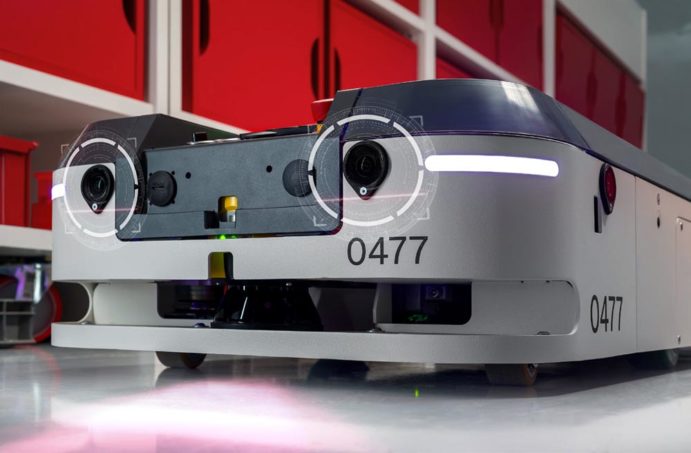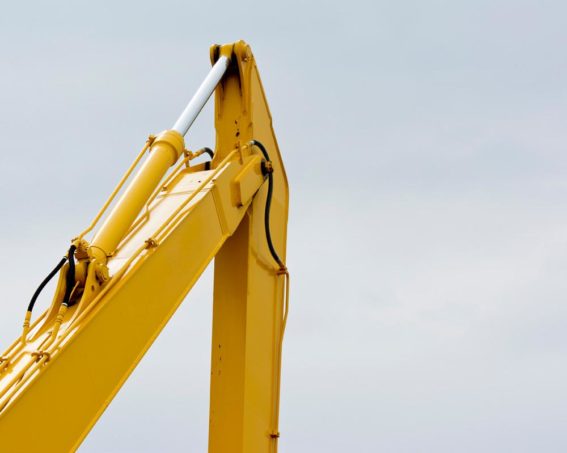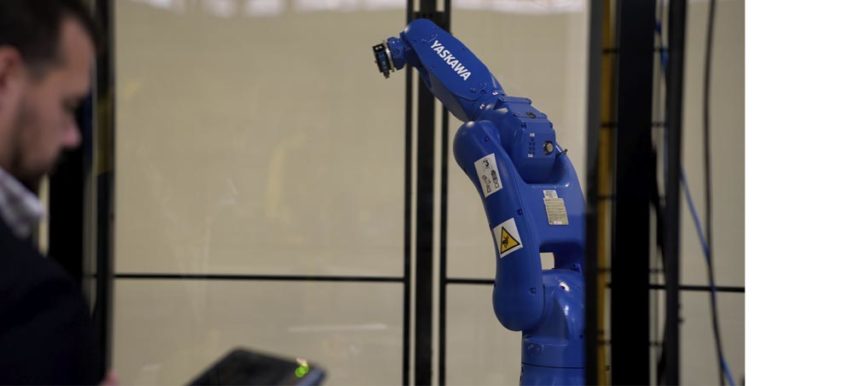Lead Screws vs. Ball Screws: Which Will Work Best for Your Application?
Lead Screws vs. Ball Screws: Which Will Work Best for Your Application?
Reviewing the characteristics of lead screws vs. ball screws can help you select the right screw-driven system for your linear motion application.
EXPERT RESPONSE PROVIDED BY: Dave Arguin.
Both lead screws and ball screws convert rotary motion to linear motion, and there is overlap in the applications in which they are utilized. The primary difference between them; how the load is carried along the moving surface. Reviewing the characteristics of lead screws vs. ball screws can help you select the right screw-driven system for your linear motion application.
Ball Screw Characteristics
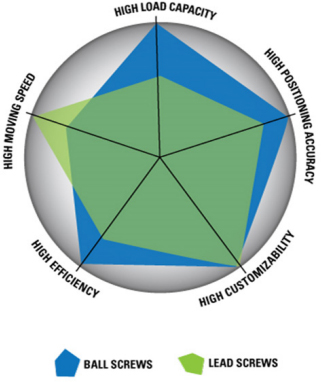
Ball screw nuts contain rolling ball bearings that travel along the screw. Rolling friction in a ball screw assembly is generally .003 (with normal lubrication), resulting in efficiency as high as 96%. This level of efficiency is greater than the highest efficiency achieved by a multi-start lead screw.
Due to the metal-to-metal contact of a ball nut rolling on a ball screw, lubrication is necessary to maintain the rolling elements. Without it, the balls will not move freely and begin to skid, causing brinelling and premature failure. Debris is also catastrophic to a ball screw assembly. Metal fragments and dirt cause the ball bearings to skid and are not recommended for use in applications where debris is present.
Ball screws have significantly higher dynamic and static load ratings than lead screws. They are generally preferred in industrial applications with higher loads or that require more substantial torque and thrust.
- High load ratings, and are therefore suitable for high static and dynamic loads
- Excellent efficiency (µ > 0.9)
- Low drive power required
- Low energy consumption
- Low self-heating
- Low-friction operation
- No stick-slip effect
- High accuracy for positioning and repetition
- High reliability and long service life with minimum need for maintenance
- Wipers available on request
Lead Screw Characteristics
Lead screws utilize sliding friction; the nut travels on the lead screw. The friction coefficient can vary greatly depending on both the material of the lead screw and the material of the nut used. Lead screw assemblies are quieter than ball nut assemblies, and lubrication for a lead screw is only necessary when using a metal nut. This makes lead screws ideal in situations requiring clean environments such as medical and food handling applications.
Lubrication can be considered depending on factors such as friction, noise, and life. Many plastic materials contain lubrication additives in varying amounts (2% to 15%), such as PTFE, silicone, or graphite. PTFE (Polytetrafluoroethylene)Â has a coefficient of friction of .05 to .10. (Note: Friction is a relative number and is dimensionless. Zero is considered frictionless, and one is where the force to move an object is equal to normal force.)
- Highly customizable
- Small to medium load ratings, therefore suitable for low to medium loads
- Very high traveling speeds, due to over-square pitches (p â‰≤ 6 × d)
- High efficiency (µ~0.5...0.8), due to high surface quality of lead screws, and nuts made of high-performance plastics
- Weight optimization possible through the use of lighter materials
- Performance optimization possible based on coatings
- High reliability and long service life with marginal need for maintenance
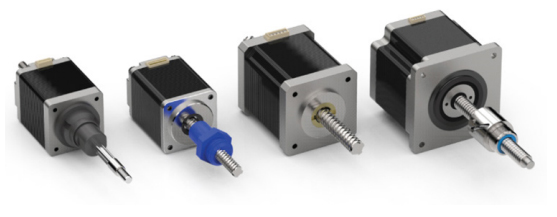
Axial Force
Axial force is determined by multiplying the coefficient of friction of the guidance system by the load.
F = μ × N
μ = coefficient of friction of the guidance system
N = Load
Example:
μ = Coefficient of Friction for lubricated Helix Linear Bearings = .0013
N = 5,000 lbs
F = μ × N
F = .0013 × 5000 lb
F = 6.5 lb
Lead screws offer more design flexibility and customization. Lead screw nuts can be designed in various materials, incorporate additional features, add functionality, save assembly time, reduce components, and avoid potential error due to stack up of tolerances. However, when using plastic nuts, sliding friction has limitations, referred to as the material's PV limit. PV limit is a combination of pressure and velocity (psi-fpm). In order to avoid overheating and degradation, a material's PV limit should not be exceeded.
Some common lead screw nut materials include acetal grades ranging from 8,000 psi-fpm to 15,000 psi-fpm, and higher PV materials such as PEEK ranging from 30,000 psi-fpm to 45,000 psi-fpm. Wear testing at different PV values can help determine nut materials, lead screw materials, and coating selection to achieve the desired life requirements.
For similar specifications, the price of a lead screw assembly is less than a ball screw assembly. A significant difference is the cost of the nut. In most cases, lead screw nuts (including custom nuts) can custom molded to reduce cost significantly.
Calculating Efficiency
Efficiency in linear motion is the measure of how well the lead screw converts torque (rotary energy) into force (linear motion.) Friction is a significant component of the efficiency equation. Lead screw efficiency can range from 20% to 86% efficiency, depending on the lead angle of the screw thread.

Higher efficiency is good but not always better. Where ball screws are prone to back driving, lead screws are often a better fit. Especially in a z-axis if there is no holding torque to the motor, or in power down situations, the lead screw or balls crew will back drive and lose position or create damage in a sensitive application. Brakes can be used to close on the output shaft of the motor when the power goes out to keep the motor shaft from rotating. Though a valid solution, adding breaks is costly, while a lead screw can handle this mechanically. At less than 50% efficiency, the lead screw is considered self-locking and will not back drive under any load.
Critical Speed
Critical speed (the maximum rotating speed of a shaft before whipping occurs, creating unwanted vibration) is a vital factor to consider when selecting lead screws or ball screws. Shaft diameter, shaft length, shaft support, and material type all impact critical speed (rpms). Critical speed formulas and charts typically account for 80% critical speed in order to create a margin of safety.

In applications where rpms may exceed critical speed, the diameter of the lead screw should be increased or the end support enhanced. However, due to space constraints, this may not be possible. In that case, a change to increase the lead is the solution to reducing rpms.
Lead screw designs inherently allow for high diameter to lead ratios. A 4:1 ratio is achievable for rolled lead screws: a ¼" diameter lead screw can have a 1.000" lead, and a ½" diameter lead screw can have up to a 2.00" lead. Compared to a ball screw that generally has a 1:1 ratio 6 × 6, 8 × 8, 12 × 12, etc. A lead screw's advantage: longer leads can turn at much slower rpms while at the same time maintaining fast linear speeds.
Design specs, space constraints, price points, quantity, accuracy, customization, and product limitations are all considerations in determining whether to use a lead screw or a ball screw in your linear motion application. Choosing the right product relies on an evaluation of all these attributes and benefits.


